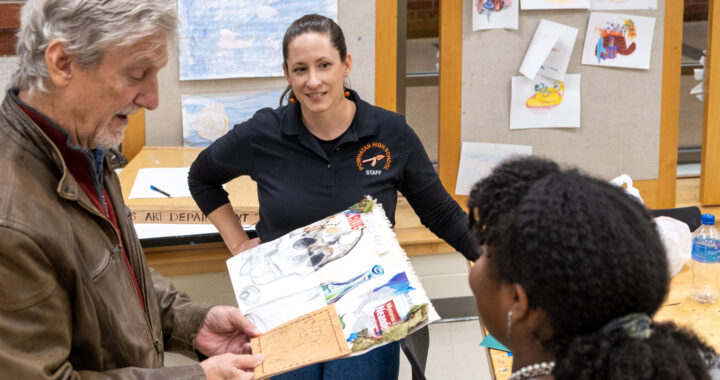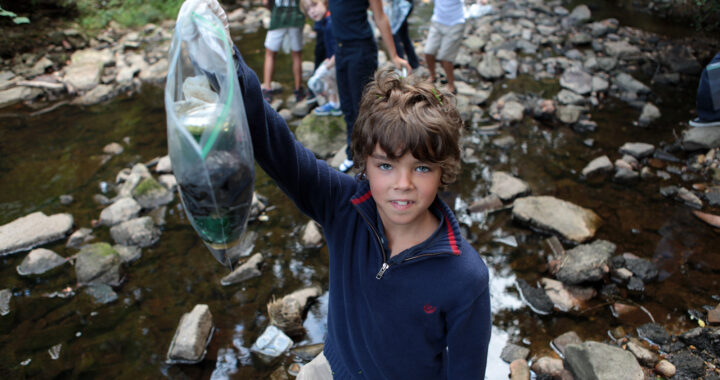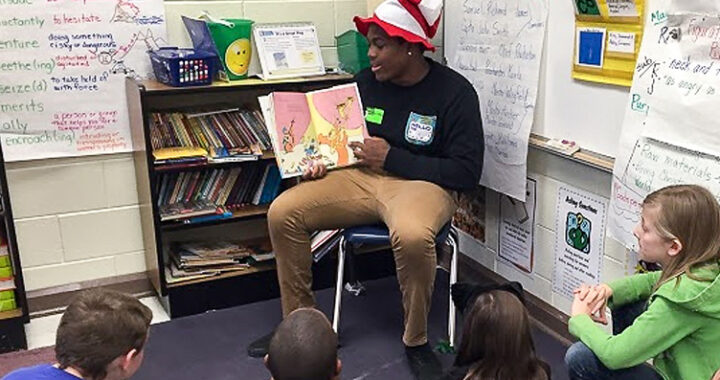Ashby McNeil is an English as a Second Language (ESL) teacher at Falling Creek Middle School. In the 2018-2019 school year, McNeil implemented a project to help her English learner students express themselves in the classroom by sharing their personal journeys. Together with fellow ESL teacher Zachary Vogt and local artists, she used multimedia to teach vocabulary, speaking skills, narrative structure, and media literacy.
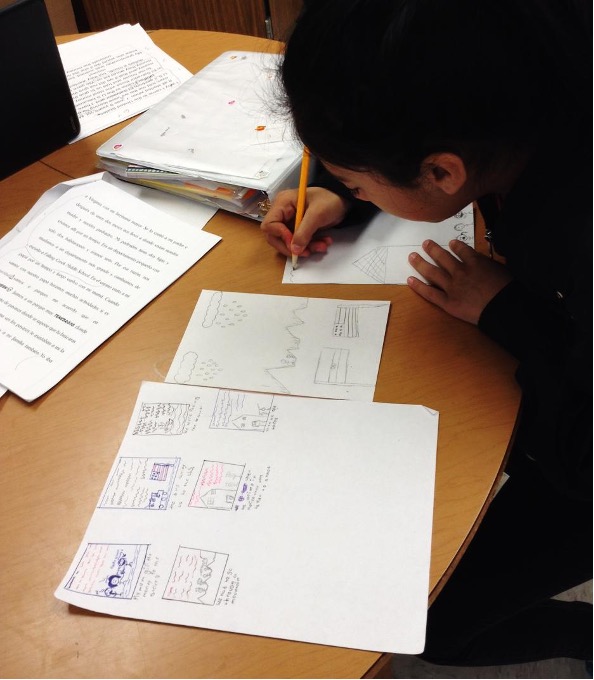
A student works from her thumbnail sketches.
Student Storytelling
Many of McNeil’s students were newcomers. In addition to a new language, they were also learning how to navigate a new school environment and new country. Some students had experienced trauma before, or while, arriving in the United States. McNeil and Vogt wanted to design a unit that would help the students to learn and apply language skills, while teachers and peers would learn about the students themselves. At first, some students had difficulty sharing private or painful aspects of their personal lives in class. Over the course of the project, several students interviewed their parents and learned more about their family history.
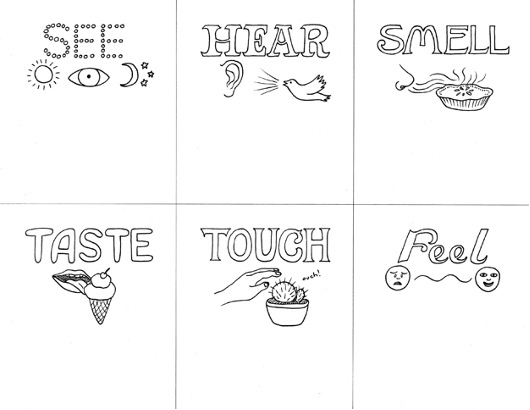
Student handout created by Aijung to teach sensory details
Combining Art and Language
Visual artist Aijung Kim visited the class throughout the unit. Students produced eight-page zines – miniature self-published works that combined text and visuals. The short, narrative format worked well for capturing personal journeys, and students were excited by the variety of book-making materials available. The project incorporated multiple English language arts standards in an engaging, creative way. Students worked through the elements of a story, the parts of a zine, and the writing process. They studied and incorporated sensory details, reviewed the work of their peers, and revised their writing. Finally, they read their zines aloud, practicing verbal communication skills. One student used figurative language in his story without prompting, and his confidence soared after being recognized by McNeil.

Students used a variety of materials on their zines
The Communal Power of Art
Each final product was as unique as the student that created it. The choices that each student made reflected both their grasp of the Language Arts concepts and their authentic voice and experiences. Finally, the zines were showcased for the Falling Creek community. This helped the whole faculty to learn more about, and relate better to, their students. It also encouraged students to feel like a part of the larger community.
McNeil was committed to improving the lives of Chesterfield County Public Schools students, as well as their acquisition of English, through art. For example, by illustrating a descriptive word, they deepened their understanding of new vocabulary. In the process, Kim honed her own teaching skills while working with a new audience across multiple visits. The artist was touched by many students’ stories and was reminded of something her own father would tell her: “It’s hard to learn a language without emotional content.”
This collaborative project not only helped students learn how to create and refine art skills, but it also allowed them tell their stories through self-expression. By supporting students’ acquisition of the English language through art-making, Ashby McNeil leveraged the power of arts integration in her classroom in a truly memorable way.

Aijung Kim teaching a zine workshop to teachers at the Joan Oates Institute
Partners in the Arts (PIA) awarded Engaging Creative Thinkers (ECT) grants to teachers from 1994 to 2021. These grants made possible over 200 innovative, interdisciplinary projects in Richmond area schools. Since then, the PIA consortium has supported both educator professional development and in-school project implementation through the Joan Oates Institute for Integrated Learning.
The ECT Awards provided opportunities for teachers to reach all students across content areas, while developing critical thinking, creativity, collaboration, communication, and citizenship. ECT projects engaged a class, grade-level or whole school and connected teachers, students, families, and the community.
Alison Travis is the Program Coordinator for Partners in the Arts at the University of Richmond. She has spent ten years working in and with public schools to support integrated, innovative teaching and improve outcomes for all students.
